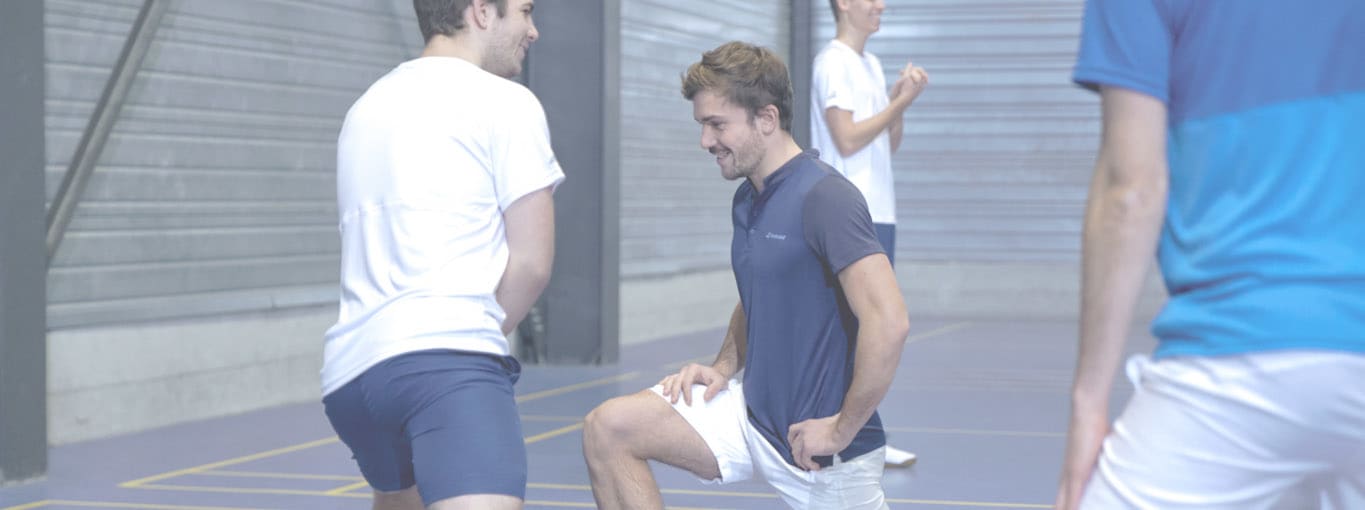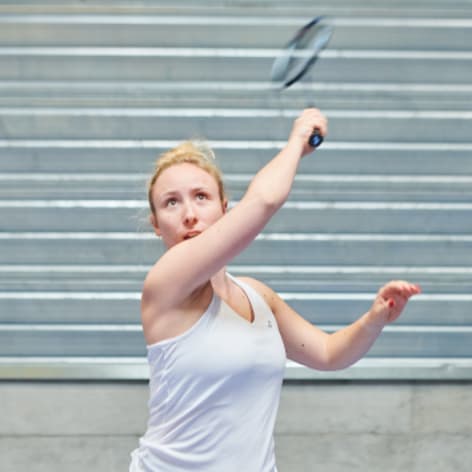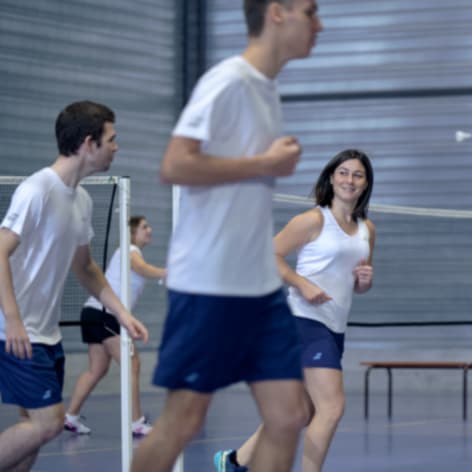In this article, former World number 2 and Babolat Ambassador Hongyan Pi together with her long time physical coach and expert Julie Cukierman explain how to deal with fatigue and prevent injuries, which will mainly teach you to:
- Work on specific areas that focus on your weaknesses
- Listen to signs given by your body
- Improve your strength in key areas
Injuries are the worst things that can happen to any athlete, and any badminton player in particular. From beginners to professionals. Of course it can happen through bad luck, but in most cases, injuries are the result of a lack of attention to your body, especially when it comes to fatigue. Most injuries happen at the end of a practice or competition, when cardiovascular or muscle fatigue occur. There is a clear link between both, and stress, lack of sleep, inappropriate training (bad planning, uneven loads of training) and fatigue bring a higher risk of injury.
How can I be efficient in preventing injuries and dealing with fatigue?
Follow these main principles, which are true for every sport:
1. Find out the specific traumatology for your sport: what are the most common injuries in badminton?
2. Customise the exercises and plan the training, which has to be adjusted to each player: take into account your strengths and weaknesses, pre-existing injuries, and also any weakness in some of your muscles
3. Warming up and cooling down/stretching: two fundamental parts of training which must not be overlooked as they are often the best way to avoid injury.
Exercise 1: Shoulder and elbow
The first set of exercises reinforces the shoulder and elbow areas, which are key elements for badminton. For all the following exercises, done with an elastic band, you have to contract your core muscles and buttocks muscles, bring your hips forward, and fix your shoulders.
1. Pull the elbows close to your body: 10 times
2. Pull your elbows at shoulder height: 10 times
3. Arm straight, along the body, small moves back and forth: 30 moves
4. Tennis serve position, hold the elbow and stretch the arm: 10 times
5. Elastic below the foot, straight arm, lift on your side: 10 times
6. Elastic below the foot, straight arm, lift in front of you: 10 times
Exercise 2: Shoulder rotators
Attach an elastic band to a fixed spot, at shoulder height.
For external shoulder rotators, stay sideways to the elastic attachment, the working arm being furthest away from the elastic. Hold the elastic band in your hand, close to your torso. Your forearm is horizontal and arm vertical (90° angle). With your free hand, hold on to your working elbow to keep it still. Make a rotation of the arm towards the opposite side of the point of attachment. Then bring the arm back to initial position. Do this 5, 10, 15 times depending on your level and the resistance of the elastic band.
To avoid the most common injuries in badminton such as shoulder, wrist, back, hip, knee, elbow, calf and ankle problems, here are some exercises aimed at reinforcing the muscles, joints and ligaments:
1. Shoulder: With a weight of 2 to 5 kg, flex your elbow at 90°. Hold this position in isometric mode (in other words, your muscle is flexed, but it’s not expanding and compressing) for one minute, 5 times.
2. Elbow: Bring down a weight (2/3 kg) in extension with a flexed elbow, hand on shoulder, then open up the arm to finish with straight arm, slowly. 5 to 10 times depending on level. 5 series for each arm.
3. Wrist: work with a weight of 2/3 kg. Rotate wrist in and out, high and low, to work on the flexibility and strength at the same time. The forearm rests on your knee, palm up. Work on the wrist only. 5 to 10 times for 5 series.
4. Back: core and abdominal workout. Stretch your spine. Hold for 10 to 20 sec. 3 to 5 times while in traction mode, using the body weight.
5. Hip: Kneel with a straight back and try to pull your head back, reaching as far as possible to work on the flexibility of the hip ligament. In case of injury, try to decrease the back tension as well. Acupuncture is a good way to treat such injuries.
6. Knee: Reinforce your knee joint by doing the “chair” exercise in isometric mode: against a wall or against nothing. Hold for 30 sec (level 1), 1 min (level 2), 90 sec (level 3). Then do a “foot to buttock” exercise, standing 20 times.
7. Calves: Especially Achilles tendon. “Stanish Protocol” to prevent elongation of the ligament. On a staircase, put one foot with half of the foot with nothing under and go down, stay 2 sec. For healing and prevention, move back up on both feet. 10 times each, 3 to 5 series, depending on your level.
8. Ankles: Work the proprioception. Stand on one foot, then try to keep your balance while closing your eyes, lift the other leg, and play balance games around this position. Another exercise is to move laterally by moving your toes sideways, then your heels.
Hongyan’s tip: Whenever you work on one specific muscle (lower or upper body), try to do the same exercise for both sides, to avoid having a lack of balance between left and right muscles.
Julie’s tip: These specific exercises are just as important to prevent injuries as they are for rehabilitation work once you have been injured. Also, always remember that none of these exercises should be painful. When pain occurs, stop.







